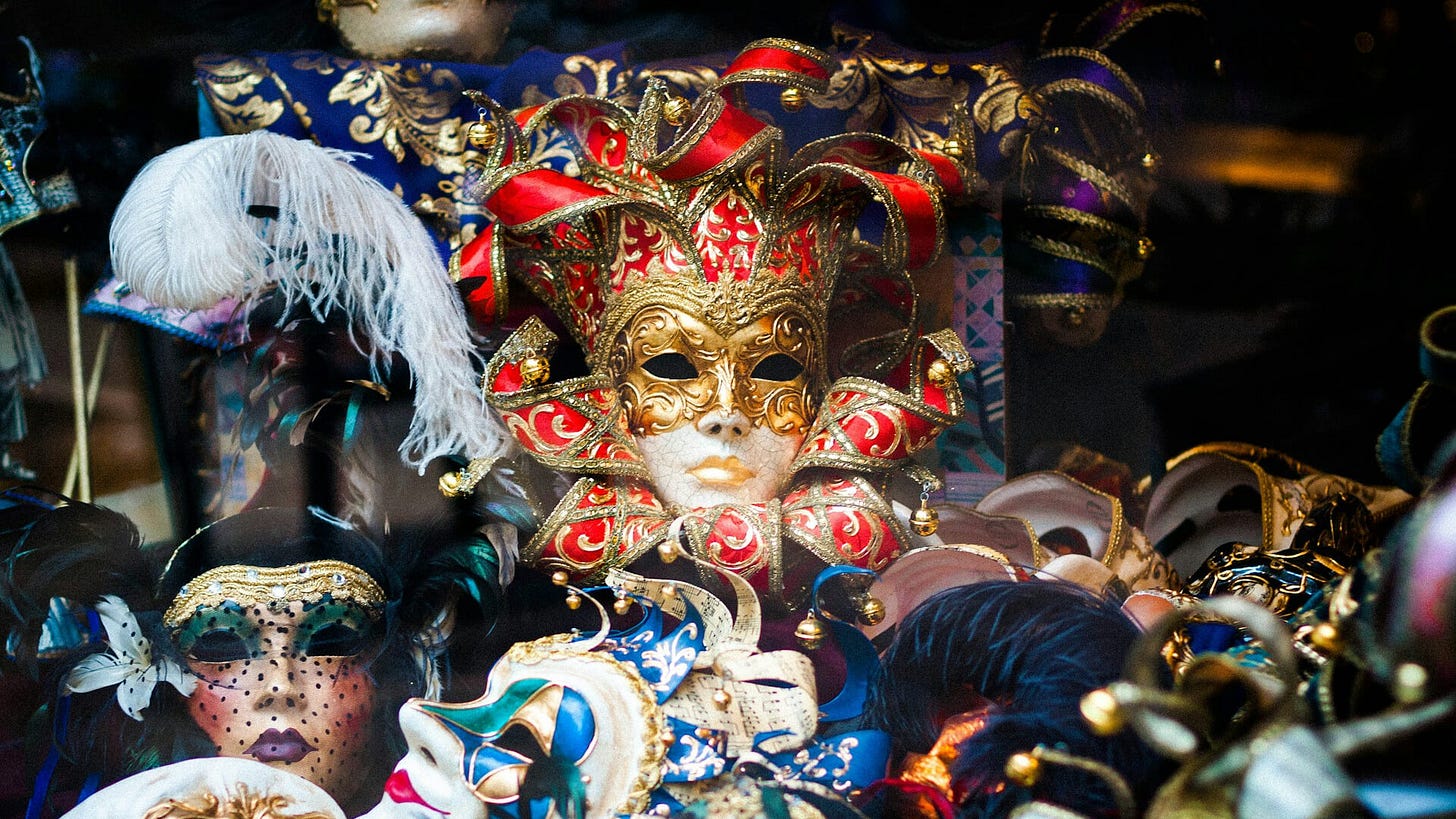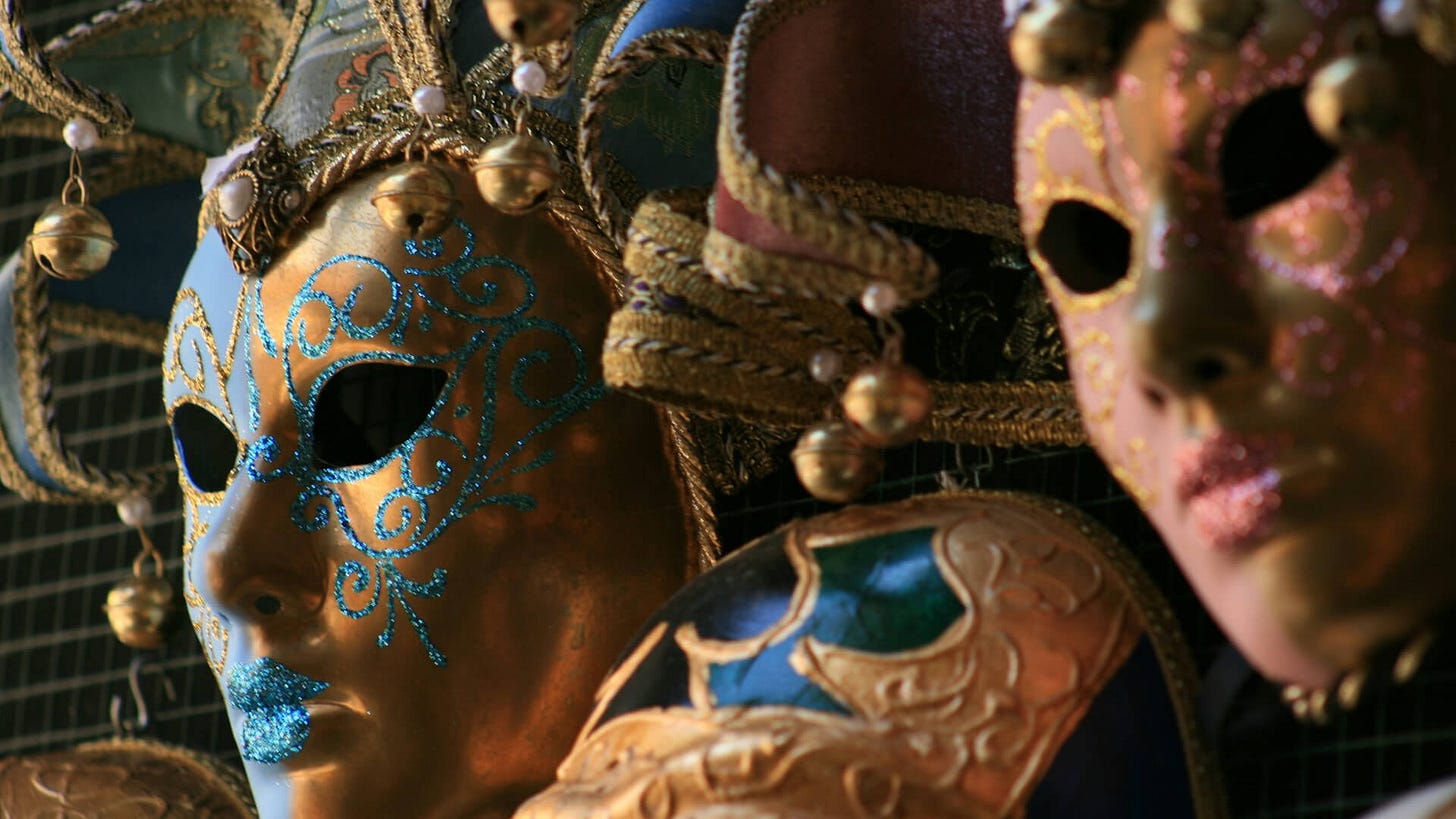This is Part 3 of a series and is best read after you’ve read Part 1 and Part 2. Then be sure to read Part 4 – Running Adventures in Your City next!
I may have done this a little backward.
It might be easier to create factions first, then specific NPCs. Starting with broad group ideas can inform specific character designs, after all. But that’s not how it happened for me this time. I had a few NPCs I really wanted my players to meet, and fleshing out their details hinted at the groups they belong to.
So in this post I’ll lay out the system I use to build factions, the groups who shape your city. Like the last two posts, it uses a version of my Seven Steps.

The Seven Steps for Creating Your Faction
If you’ve been following my city creation posts this will feel familiar, but with some new twists and tools.
1. Concept
Start with the core idea: why does this faction exist? What do they want? Are they an expression of the city’s values or do they challenge those values?
Whatever the answers to those questions, the faction should reinforce the vibe of your city in some way. You can use the following spark tables to generate ideas.
Type
What kind of group is this?
Government agency: hired employees who serve the city’s interests.
Family or clan: tied by blood or marriage.
School: formal or informal, magical or mundane.
Company, guild or trade association: exists to make a profit.
Order: religious or ideological.
Gang, horde: loosely organized, often chaotic.
Ideal
What do they care about?
Strength: physical, mental, political, etc.
Knowledge: as a concept or as a specific field of study.
Communication: language, secrets, persuasion, arts, etc.
Nature: animals, weather, ecosystems, etc.
Order: laws, tradition, hierarchy.
Emotion: as a concept or a specific emotions such as love, rage, joy, etc.
Relationship to Ideal
How do they relate to that ideal?
Zealots seek to destroy the opposite of the ideal.
Champions promote or embody the ideal.
Balancers seek harmony or moderation between the ideal and its opposite.
Hoarders collect and keep the ideal for themselves.
Opponents actively resist the ideal and promote its opposite.
Vanquishers seek to erase the ideal entirely.
Examples:
Agency, Order, Champions: City guards charged with enforcing laws.
Company, Communication, Hoarders: A trade guild focused on historical artifacts and rare works of art.
Clan, Communication, Champions: A troupe of wandering performers.
2. Name
Now give the faction a name that sounds cool at the table.
A good name will set the tone for the faction for your players. It can hint at mystery, menace, nobility or tradition. To help, I use the following steps to create a d66 spark table for factions in my city:
First, brainstorm six options in each of the following categories. Most of the options should fit the vibe of your city. I usually include at least one option in each category that clashes with the vibe.
Color (e.g., crimson, silver, jade)
Animal (e.g., viper, crane, mantis)
Feature (e.g., eye, fang, tower)
Substance (e.g., flame, stone, blood)
Action (e.g., whispering, hunting, rising)
Attribute (e.g., silent, broken, eternal)
Then, roll 1–3 elements and mix them with your faction type to create your name. Always feel free to adjust the specific words, use synonyms, etc. to get a name you like.
Examples:
The Brotherhood of the Crimson Flame
The Eyes of the Golden Sun
The Crimson Caravan
3. Description
Describe your faction in 2–3 sentences. What do they want? What are they willing to do to get it? How are they organized? Are they respected, feared or ignored?
Focus on what the characters will notice. Leave deeper stuff for Hidden or Secret Information later.
Examples:
The Brotherhood of the Crimson Flame: Taremu city guards. Expected to be loyal and strong. Want to prevent crime and keep the city safe.
The Eyes of the Golden Sun: Wealthy merchants who discretely sell rare goods to collectors. Outwardly high-class luxury sellers but basically a black market with more money.
The Crimson Caravan: A troupe of halfling performers. Irreverent and suggestive while performing but respectful toward citizens. Arrive every year for the Festival of Blood.
4. Landmarks and Key Figures
This is your quick list of people, places and signs that help your faction show up in the world:
Where they’re based: Do they have a building, temple or hideout? Do they claim other areas as their territory?
Who represents them: Include a few named NPCs or common archetypes (e.g., enforcers, scribes, spies). For help creating named NPCs, I use the NPC creation process I described in my last post.
How they’re recognized: Do they use symbols, tattoos, uniforms, or colors?
You don’t need an exhaustive list or a full org chart. Just enough to help your characters find them.
Examples:
The Brotherhood of the Crimson Flame: Red pyramid bases in each city district. Guards dressed in red armor with golden pectorals.
The Eyes of the Golden Sun: Shops displaying a sun with a cat’s eye. Overly friendly merchants.
The Crimson Caravan: Red-paneled wagons trimmed with gold. Halfling tumblers, bards and jesters in garish costumes.
5. An event or situation
Factions need to be in motion. What is happening with them right now? Maybe they just pulled off a big win, or about to make a bold move. Maybe they’re facing a crisis or in the middle of advancing part of their agenda.
If you need some inspiration, roll on the following lists for some ideas:
First, the six event types from my first post:
Competition: A contest of wits, strength or skill.
Holiday: A festival, religious observance or state commemoration.
Power Shift: Someone is rising to, or falling from, authority.
Mystery: Something strange is happening, but no one knows why.
Opportunity: Something promises gain or glory.
Threat: Something bad is coming, or is already here.
Then, a focus for the event:
Location: land, ruin or sacred ground.
Structure: a building, fortress or landmark.
Text: scroll, song, tablet or prophecy.
Rarity: rare item, gem or magical artifact.
Skill: unique technique or secret art.
Figure: person, god, monster or bloodline.
Examples:
The Brotherhood of the Crimson Flame: A high priest of Sobek-Ra arrived yesterday to preside over the closing ritual of the Festival of Blood. The Brotherhood is tasked to assist the priest’s personal guard.
The Eyes of the Golden Sun: Recently obtained the Emberleaf Codex, an ancient tome depicting early visitors to Taremu. The language is unknown.
The Crimson Caravan: Learned that the Emberleaf Codex is in the city and are planning to steal it.
6. Hidden Information
What can the characters learn by talking to, performing favors for, or watching faction members? Think of quest hooks, alliances and complications. If your faction is secretive, most of their info might fall here.
Examples:
The Brotherhood of the Crimson Flame: The high priest came himself because an oracle prophesied the presence of the Serpent Cult in the city.
The Eyes of the Golden Sun: Conducting a silent auction of the Emberleaf Codex, using the Festival as cover. Clients from all over the continent have gathered to take part.
The Crimson Caravan: The visitors depicted in Emberleaf Codex were halflings. The book was written by a priest of Sekhmet who traveled with them for a time.
7. Secret Information
These are the things that the faction hides from outsiders (and sometimes their own members). Some ideas:
A hidden origin or agenda
A cursed relic or ancient enemy
A connection to your campaign’s big bad
A connection to a party member
Remember that Secret Information might not be found. Don’t spend a lot of time on it, but have something juicy to reveal if the characters dig far enough.
Examples:
The Brotherhood of the Crimson Flame: On rare occasions the Brotherhood will induct honorary members. These members are taught the Brotherhood’s fire-breathing technique.
The Eyes of the Golden Sun: The auction is an excuse for Serpent Cult members to gather in the city.
The Crimson Caravan: Halfling performances are actually disguised ancient rituals. The Emberleaf Codex reveals the meanings in ciphered text. They will do anything to prevent it from being deciphered.

Putting it All Together
Here’s how my three factions exist in my notes right now:
The Brotherhood of the Crimson Flame
Lion-headed city guards. Dress in red armor with gold pectorals. Expected to be strong and loyal. Want to prevent crime and keep the city safe. [Have a secret fire-breathing technique that they will share with honorary members.]
Zahotep: Senior Patrol Captain. Well-known and liked around the city. A minor champion in the Lion’s Maw arena.
Red Pyramids: Small bases in each district, modeled after the Crimson Palace. The palace is their main headquarters and training grounds.
City Guards: A mix of career guards and retired soldiers. Carry swords and spears for ceremonies or emergencies. Mostly use soft clubs when possible.
Honor Guard: Working with a visiting high priest’s personal guards to protect the priest. The priest will preside over the Festival’s closing rituals. → The priest is really here because an oracle revealed the Serpent Cult is gathering in the city.
The Eyes of the Golden Sun
Merchants who sell high-priced luxury goods to nobles and the wealthy. → A black market for the wealthy and connected. Deal in rare artifacts. [A front for the Serpent Cult.]
Merchants: Always perfectly manicured and dressed. Unnervingly friendly and speak in refined language.
Stores: Generally require introductions by another patron, but make exceptions for especially famous guests. Primarily in the Saffron Quarter. Marked by gold plaques bearing a sun disk with a cat’s eye in the center.
Auctions: Invitation-only. → Current silent auction for the Emberleaf Codex. The Codex is written in an unknown language and depicts ancient visitors to Taremu. [Auctions are a front for information exchange between cult members.]
[Mercenaries: The Eyes obtain artifacts through theft and murder when legitimate channels fail.]
The Crimson Caravan
A traveling troupe of halfling performers. Mischievous, irreverent and suggestive when performing. Overly polite and deferential to citizens when not. → The Caravan changes name and appearance to best appeal to each city they visit.
Mivven Bes: Master of the Caravan. Fast-talking and always up to something. → Knows that the Eyes have the Emberleaf Codex and plans to steal it. [The Codex reveals that halfling performances are ancient rituals and details their meaning. Written by a priest of Sekhmet who traveled with them.]
Performers: Tumblers, bards, jesters and others. Wear brightly-colored costumes. → Skilled burglars who know how to handle themselves in a fight.
Wagons: Red-paneled, trimmed in gold. → Several false compartments. panels are easily replaced to change their appearance.
The Eighth Step
Surprise! There isn’t an eighth step this time. We’ve already done a ton of work building our city. The next thing to do is run sessions here. I’ll cover some tips and tools I use in my next post.
Other Thoughts
Once again, credit where credit is due (note that none of the following are affiliate links):
My concept and focus lists are adapted from The Ultimate RPG Game Master’s Worldbuilding Guide by James D’Amato.
Indirect inspiration for Ideals and Relationships to Ideals from The Tome of World Building by Mythmere Games.
Not directly referenced in my post, but the Cairn 2e Warden’s Guide has some great ideas and tables for creating and running factions.
Deficient Master’s three questions for factions got me started thinking about how to create factions and how they would interact:
Baron de Ropp’s focus on a faction’s resources inspired how I create a faction’s landmarks and key figures:

